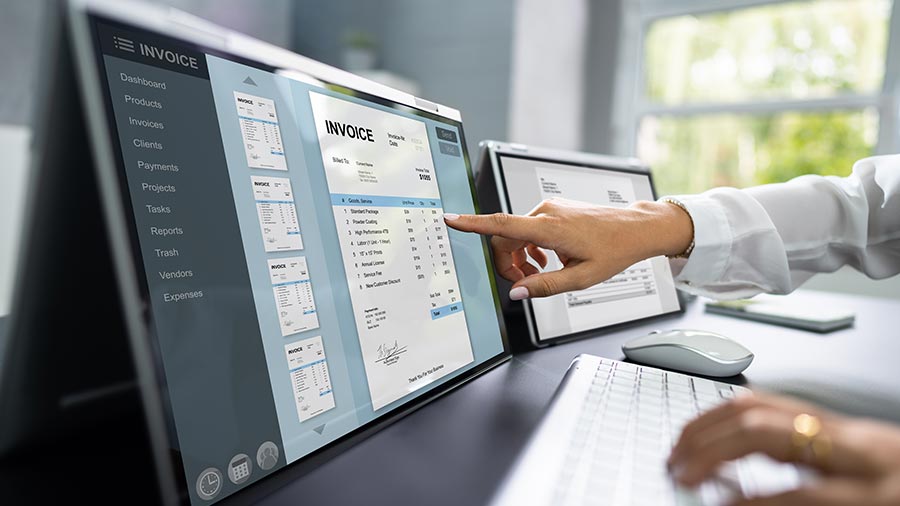
The United Arab Emirates (UAE) continues modernizing its tax and financial systems, with e-invoicing being a key focus. In alignment with global digital transformation trends and the nation’s vision for technological advancement, the Federal Tax Authority (FTA) is introducing significant changes to e-invoicing in 2025. This blog delves into these updates and highlights their implications for businesses operating in the UAE.
E-invoicing is the electronic issuance, transmission, and receipt of invoices in a structured format. Unlike traditional paper-based invoices, e-invoices are created and stored digitally, ensuring accuracy, transparency, and ease of access.
In the UAE, e-invoicing is a cornerstone of the tax framework, which was introduced alongside VAT implementation in 2018. It enables efficient tax compliance, reduces errors, and facilitates the authorities' real-time monitoring of transactions.
The year 2025 brings new e-invoicing regulations aimed at enhancing compliance, transparency, and technological integration. Below are the major updates:
1. Mandatory Integration with FTA Systems: Businesses will now be required to integrate their invoicing systems directly with the Federal Tax Authority’s e-invoicing platform. This integration ensures that all VAT-registered transactions are automatically reported in real-time, minimizing discrepancies and tax evasion.
2. Introduction of Structured Formats: The FTA has mandated the use of specific formats, such as XML or UBL, for e-invoices. These formats are machine-readable, allowing seamless data exchange between businesses and tax authorities while reducing manual intervention.
3. Inclusion of Additional Data Fields: New regulations require businesses to include detailed information in e-invoices, such as:
• Buyer and seller tax registration numbers
• Line-item details, including product descriptions and VAT breakdowns
• Unique invoice identifiers
4. Phased Implementation for Small and Medium Enterprises (SMEs): SMEs will have a phased timeline to comply with the updated e-invoicing regulations. This approach aims to reduce the burden on smaller businesses while ensuring eventual compliance.
5. Penalties for Non-Compliance: Stricter penalties will be imposed for non-compliance with e-invoicing regulations. Businesses failing to meet the requirements may face hefty fines, emphasizing the importance of timely adoption.
The transition to a robust e-invoicing framework offers numerous advantages for businesses, the government, and consumers alike:
1. Enhanced Efficiency: E-invoicing eliminates manual data entry, reducing errors and saving time. Businesses can automate invoice generation and reconciliation, leading to streamlined operations.
2. Improved Tax Compliance: Real-time reporting to the FTA ensures that businesses remain VAT-compliant. The new system also simplifies audits and minimizes the risk of penalties.
3. Greater Transparency: E-invoicing provides a clear audit trail for all transactions, enhancing trust between businesses and authorities. This transparency also reduces opportunities for fraudulent activities.
4. Cost Savings: By digitizing the invoicing process, businesses can significantly cut down on costs associated with printing, storage, and manual labor.
5. Environmental Impact: The shift to digital invoicing supports sustainability initiatives by reducing paper usage and promoting eco-friendly practices.
To ensure a smooth transition to the updated e-invoicing regulations, businesses should take the following steps:
1. Upgrade Accounting Software: Invest in accounting or ERP systems that comply with the FTA’s e-invoicing requirements. Ensure the software supports structured formats like XML and integrates with FTA systems.
2. Train Employees: Educate your finance and accounting teams about the new e-invoicing regulations and processes. Conduct workshops or training sessions to familiarize them with the updated system.
3. Consult Tax Experts: Seek guidance from tax consultants or legal professionals to understand the technical and legal implications of the changes. They can assist in ensuring compliance and avoiding potential penalties.
4. Audit Current Practices: Review your existing invoicing and VAT compliance processes. Identify gaps or inefficiencies that could hinder adherence to the new regulations.
5. Test Integration Early: Begin testing the integration of your invoicing system with the FTA’s platform well before the implementation deadline. Early testing ensures any technical glitches are resolved in time.
While the updated e-invoicing framework promises numerous benefits, businesses may encounter certain challenges during the transition:
1. Cost of Implementation: Upgrading systems and training employees require financial investment, which may strain smaller businesses.
2. Technical Complexities: Integrating existing systems with FTA platforms may pose technical challenges, especially for businesses with outdated software.
3. Limited Awareness: SMEs and new businesses may lack awareness about the updated regulations, leading to compliance delays.
4. Adaptation Period: Employees accustomed to traditional invoicing methods may require time to adapt to the new processes, impacting initial productivity.
The UAE’s push for e-invoicing aligns with its broader vision for a digitally advanced economy. These updates are expected to pave the way for further innovations in the tax and financial sectors, such as:
1. Artificial Intelligence Integration: AI-powered tools could automate invoice verification and fraud detection, enhancing system efficiency.
2. Blockchain Technology: Blockchain could be leveraged to create tamper-proof records, further boosting transparency and trust.
3. Global Interoperability: The UAE’s e-invoicing system may eventually align with international standards, facilitating cross-border trade and compliance.
The introduction of updated e-invoicing regulations in the UAE marks a significant step toward modernizing the nation’s financial ecosystem. While businesses may face initial challenges in adapting to these changes, the long-term benefits far outweigh the hurdles.
By embracing digital transformation and ensuring compliance with the new requirements, businesses can position themselves for success in the evolving UAE economy. For expert guidance on navigating e-invoicing regulations, visit UAE Lawyers today.